This post may contain affiliate links. This just means I may receive a small commission at no extra cost to you for helping them promote their product or service. I don’t endorse any services I don’t personally use or recommend.
Dust and dull headaches. The two most prominent memories of our time in Gujarat. Okay, that’s underselling it a bit. The Jain Temples at Sunrise and Asiatic Lions are my most prominent memories of India. But I’m also not going to pretend that this was my favorite state in India. Gir National Park was what really made our time in Gujarat worthwhile.
This Northwestern state of India is not well-traveled. While that sounds appealing — the reality is not so endearing. We visited Ahmedabad (the UNESCO City), Palitana (The Jain Holy City), and Sasan Gir (for the Asiatic Lions). While there were redeeming qualities about each destination — truly only the lions can make enduring the exhausting experience of blazing our trail through Gujarat worthwhile.
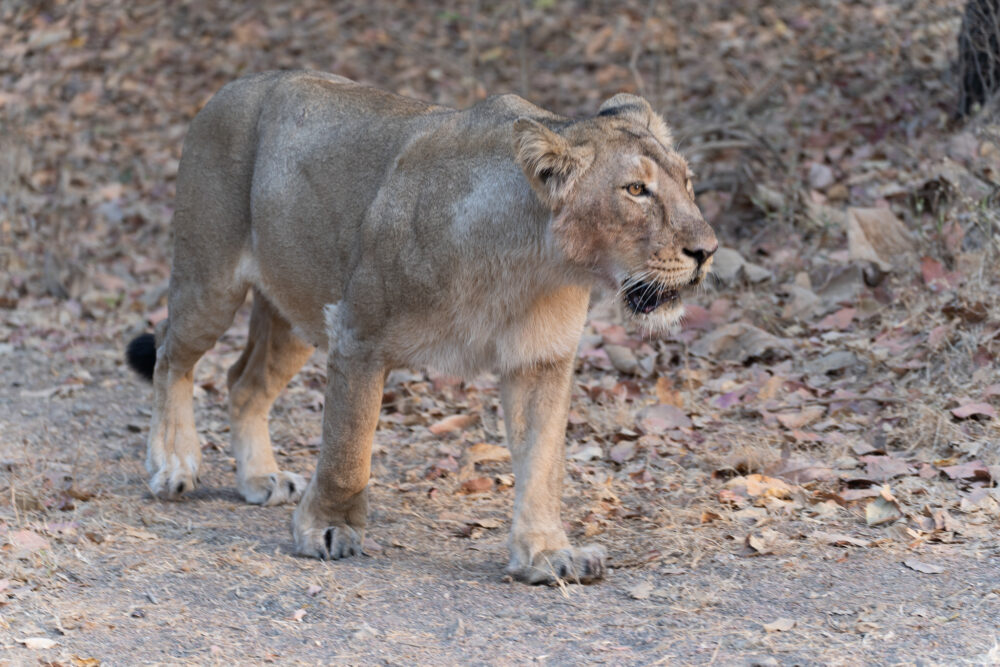
Let me clarify: It’s not that there aren’t a lot of people in Gujarat. There are many. There are just very few foreign tourists and quite a few hurdles that come along with venturing into less-trodden territory in this particular corner of India. Lots of selfie requests and limited transportation options — just to name a few.
Here’s how to visit Gir National Park as a Foreigner for a chance to see the last remaining Asiatic lions.
Your Guide to Visiting Gir National Park
Here’s some quick Gir National Park information.
Gir National park is a 1400 square kilometer sanctuary where India looks exactly like you want it to. No garbage, roaming wildlife, and depending on the time of year— beautifully greenery. It’s also home to more than 600 Asiatic lions and counting. The entire area is part of Gir National Forest.
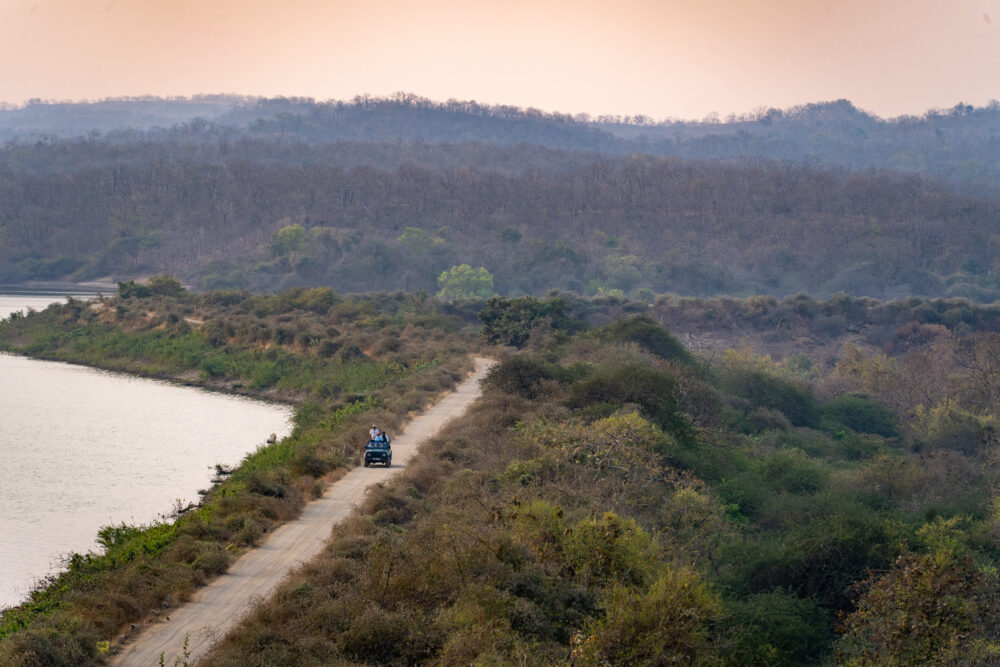
There are shy spotted deer, dusty mongoose, lanky monkeys, swaggering lions, crocodiles, peacocks, and a plethora of other birds inside the park boundaries that are commonly spotted by visitors.
There are also leopards and hyenas within the park but it’s HIGHLY unlikely you’ll spot one of these species. They are mostly nocturnal and are extremely elusive. So don’t get your hopes up.
This is a guide to the Jungle Trail Safari of Gir National Park, not the Devalia Park Safari. The Jungle Trail is a more wild and natural experience allowing the animals to truly roam free— not in a captive setting. This is the only excursion that actually enters the national park.
Quick History of the Asiatic Lion (Asiatic Lion Facts)
Yup. Asia has lions. And it used to have more of them. The Asiatic Lion is slightly smaller than its African relative and it used to roam across Turkey, Iran, Mesopotamia, Saudi Arabia, and India. But humans suck and hunted them almost completely into extinction. Now the only place they exist is Gir National Park.
Well, in and around the national park.
These are wild animals and they aren’t contained to the national park in any way. This means that as the population grows (which fortunately, it is growing) the lions expand their habitat and spill into the local villages like Sasan Gir and even the busy streets of nearby Junagadh. Needless to say, lions can disrupt local life in the area just a bit. Back in 2014, when they saw a huge expansion in their population the animals gained a bit of a man-eater reputation. While they did eat 14 people (and injure many more) that year, attacks are still rare and the park is totally safe (well not totally safe I guess— but no wildlife experience is).
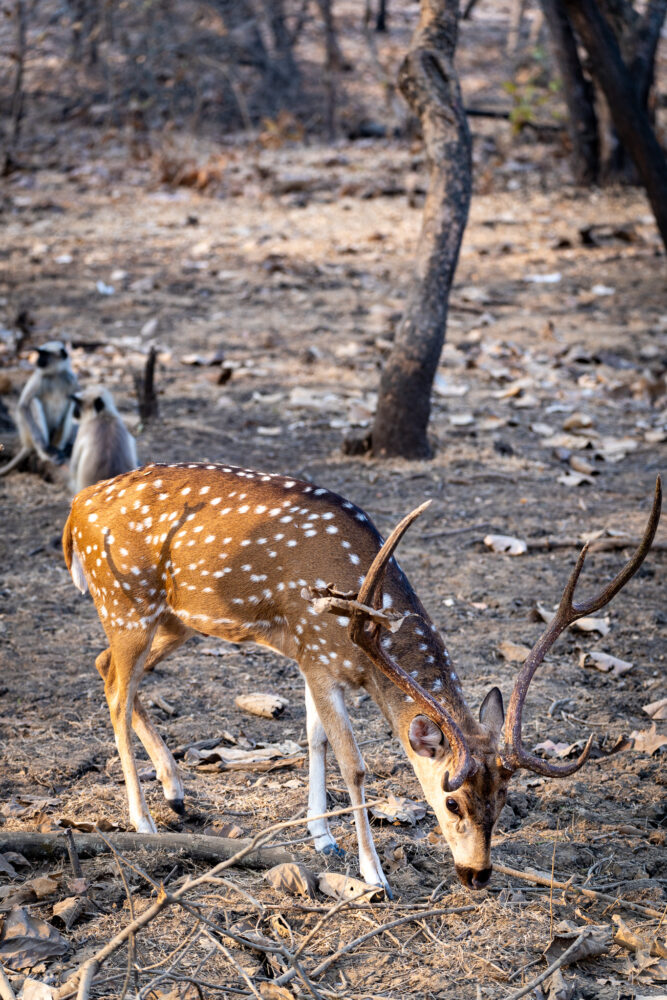
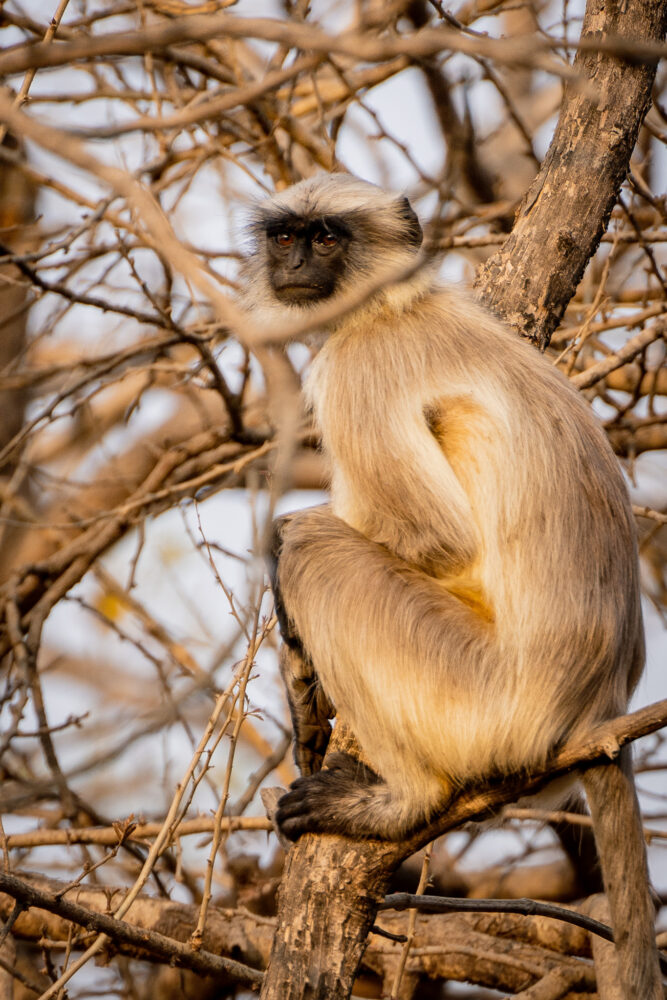
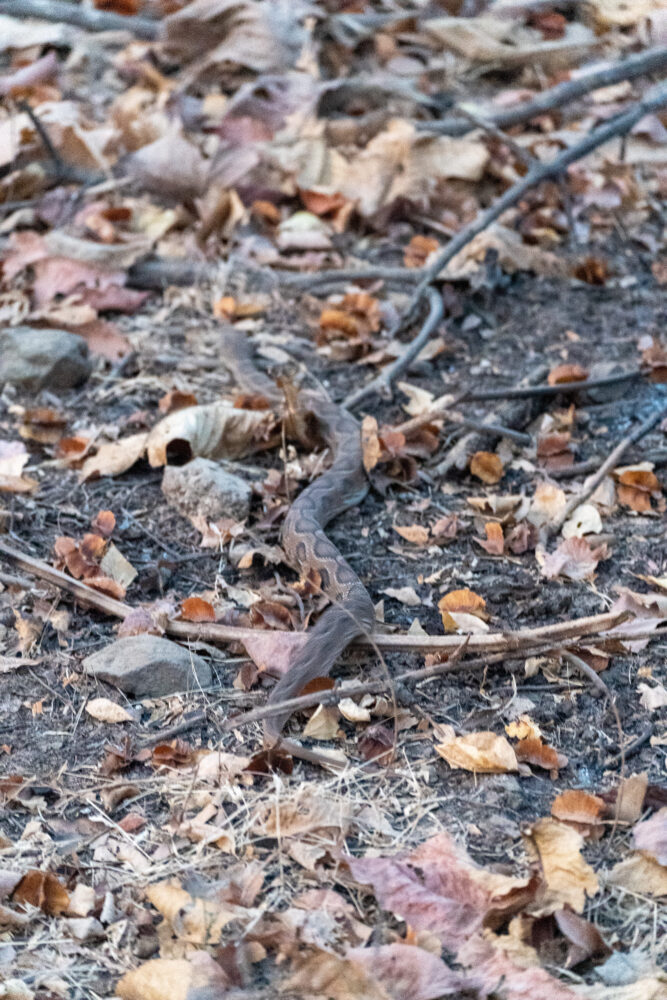
Moral of the Story: lions do sometimes hurt people in the area but it’s unlikely to happen while you’re on safari.
Is it Ethical for the Lions of Gir National Park?
This is always a good question to ask. Because with most animal attractions around the world, the answer is no. Like elephant riding. But the lions of Gir National Park are in good hands.
For starters, they are totally free, wild, and well-respected in the community. Locals revere the lions even though their presence usually comes at the cost of some of their farm animals.
The park is also extremely well-regulated.
Only 150 jeeps are permitted to visit the park per day. 50 jeeps at each of the three 3-hour time slots in the morning, mid-day, and late afternoon. There are numerous jeep trails crisscrossing the park and each of the 50 jeeps is assigned one of the 15 trails to ensure there won’t be any overcrowding.
Unlike other places, we have gone on safari, because of this system the jeeps can’t just rush to where someone else has sighted a large animal. They are stuck to their route. Worse for you — but better for the animals, so overall it’s a good thing.
Also although the cost of the park is quite high for foreigners it’s less than 1/3 the price if you are an Indian national. I’ll dig into that later, but the money clearly goes back into the park and preserving the lion’s natural habitat. This discount for locals is good because it allows them to experience the lions in an educational way and gain that profound respect for them that’s needed to keep them living in harmony.
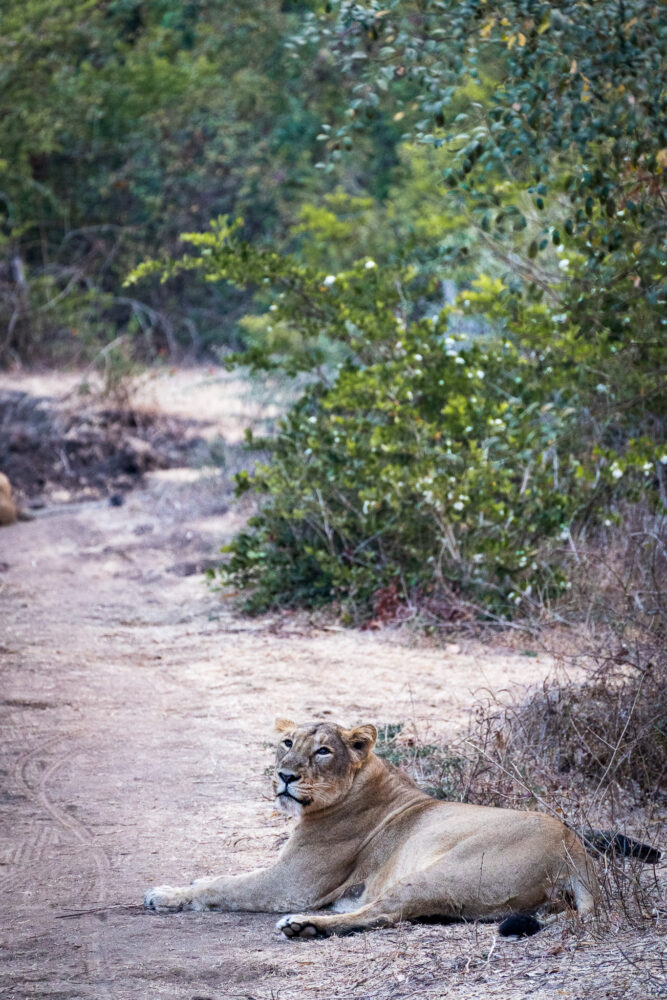
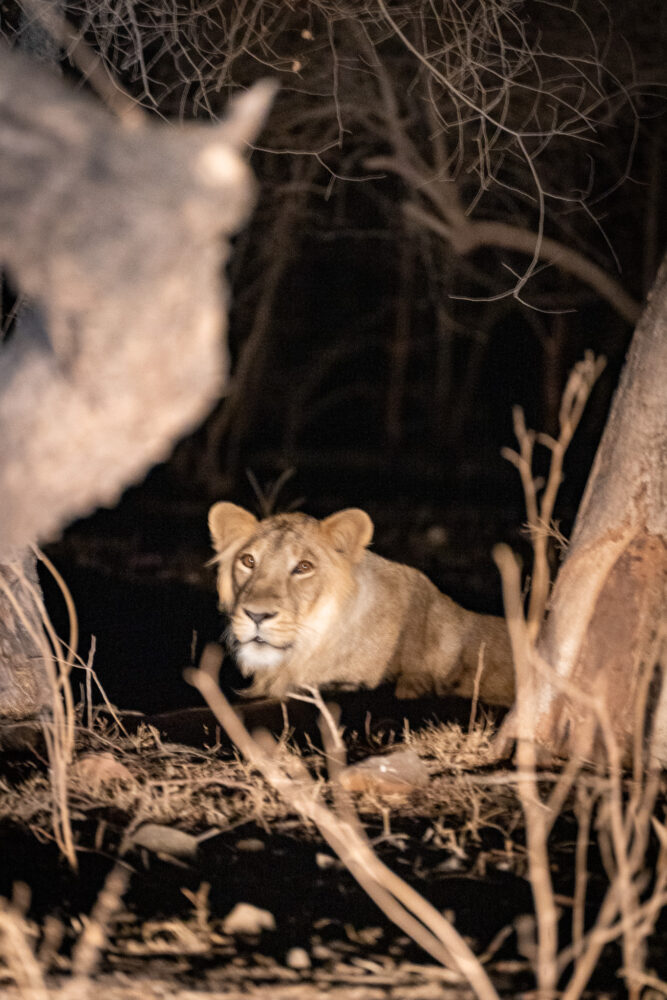
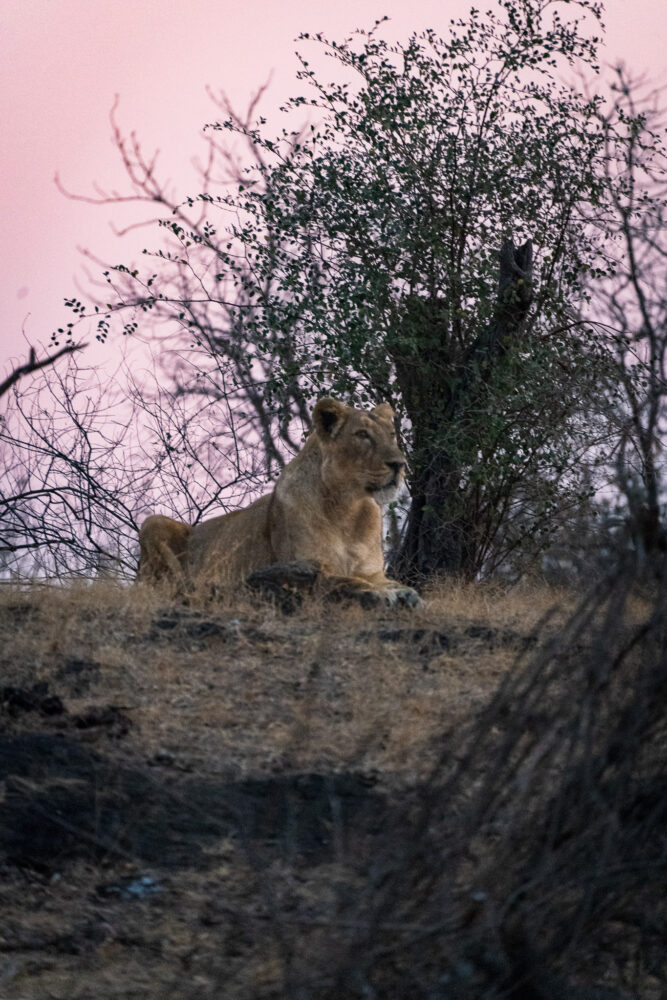
In Peru, many local Quechua porters who live in the Andes are never able to see Machu Picchu because of the high government-set price tag. This is a shitty system and why it can be a good thing when locals have a cheaper price tag than foreigners.
Gir was one of the cleanest and most natural-looking places we saw in all of India. I can 100% recommend a visit to Gir National Park if you’re hesitation was ethics-related.
What exactly is the likelihood of seeing lions in Gir National Park?
While it’s common for Indian nationals to do multiple safaris — it’s just too expensive for us as foreigners to do that.
So with one shot at a safari…am I going to see lions?
My park guide says — 75% chance.
That’s pretty decent odds. It all comes down to luck here. The park guide has very little spotting to do because he must stick to his exact jeep route. But he was helpful in picking out the more camouflaged animals among the monochrome landscape.
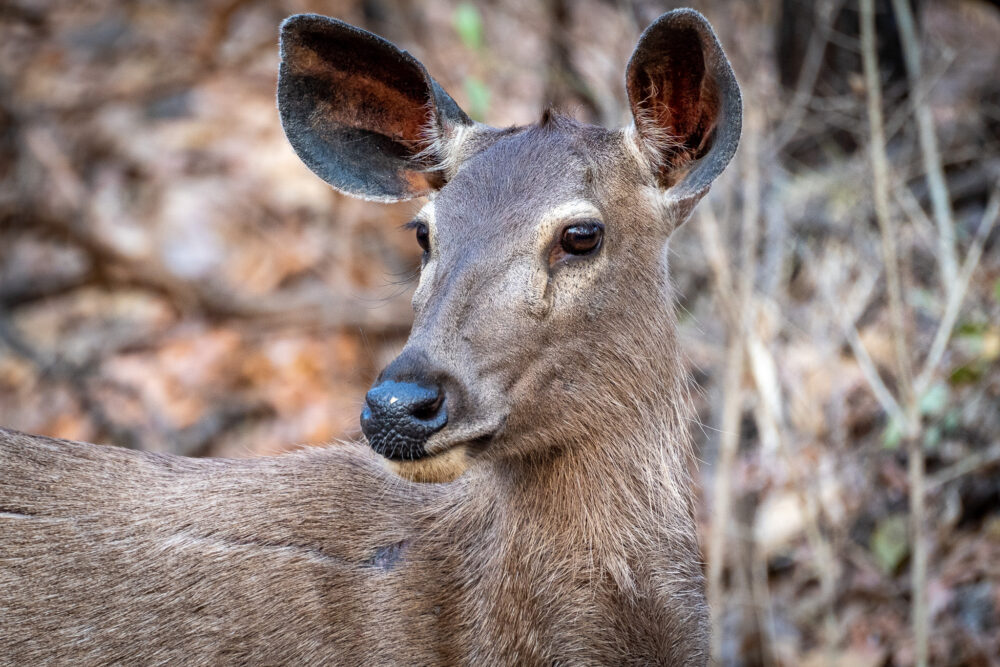
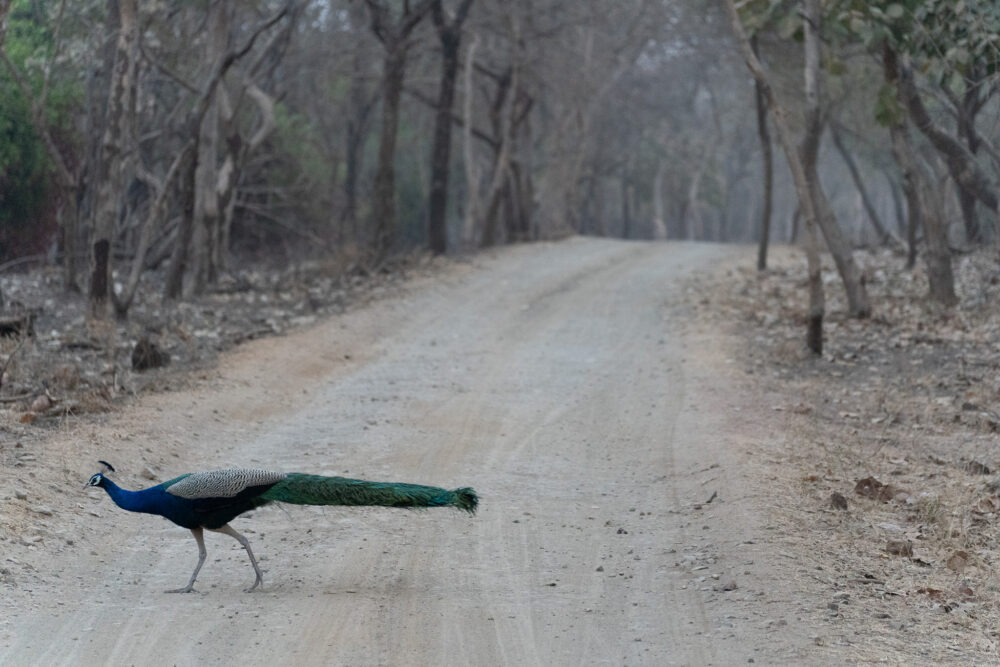
Do I need a reservation for Gir National Park?
Unlike many other national parks in India, you DO need a reservation way in advance for Gir National Park. I recommend booking tickets no less than 2 weeks in advance. 1 week if you aren’t dead set on scoring the best time slots.
Which Slot is Best?
There is no way to visit other than these Gir National Park tours. These are the official Gir National Park Safari timings.
Gir National Park Jeep Tours
Best: 6 AM – 9 AM
Second: 3 PM – 6 PM
Worst: 9 AM-Noon
This is based on the likelihood of spotting animals — specifically lions. I would make sure to get either the morning or night visit if I’m paying this steep of a price tag.
How Much Does it Cost to Visit Gir National Park?
Speaking of price…what is this adventure going to cost me?
Gir National Park Ticket Price
Foreigner Jeep Price: 13,800 rupees or $167 at this time. (+ 10% paypal booking fee that I’ll explain later).
Indian Jeep Price: 4,700 rupees or $58 at this time.
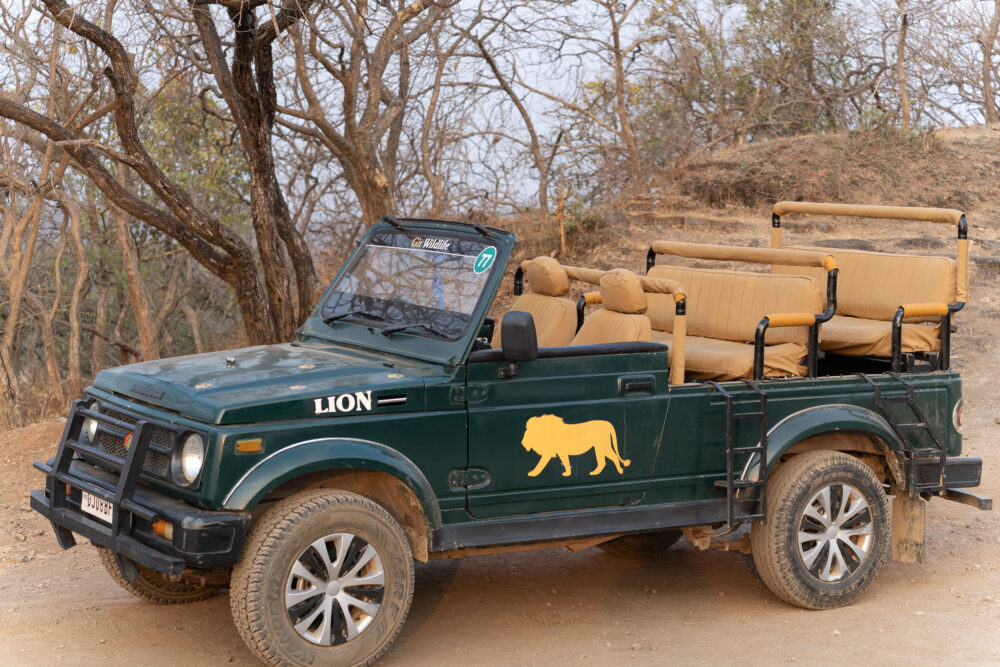
This covers your jeep (also known as a gypsy), driver, park guide, and all the park fees. You should also expect a 1,400 rupee “professional photography fee” to be paid upon arrival if you have a camera that isn’t a cell phone. There’s no sneaky way around that one either.
Tickets for foreigners are much more expensive than for locals. You pay per jeep and can fit as many as 6 people per jeep. The catch is…you can’t just show up and join a jeep. You must have a reservation made with your ID (and all the IDs of those joining you) in advance. There is no cheaper way to visit this park. It’s not a budget-friendly attraction. But it’s well worth the splurge.
Best time of year to visit Gir National Park?
The park is closed from June 15th to October 15th. Aside from that, I would avoid the summer months of May and June because the heat will be unbearable.
Gir National Park Safari Booking
How to book your ticket. A surprisingly not-so-straightforward process.
This is the official website to make your reservation.
Unfortunately, you need both an Indian phone number and an Indian credit card to make and hold your reservation. So, don’t waste your time online. Instead, shoot them a message on WhatsApp. They will then provide you with a PayPal link (with a 10% fee added, which makes the price approx. $184) and you can make your payment and send them photos of your passport so they can reserve your jeep.
Gir National Park Contact Number: +91 93155 17530 (WhatsApp)
You need a phone number, photos of your passport, and an Indian visa to make this booking.
Keep in Mind! Your Safari driver/guide is going to call you the night before your safari on the phone number you provide. This is to arrange your pick-up. So make sure the number works.
The only way around the 10% PayPal fee is to get an Indian Sim Card (a process in itself but check out my guide on first-timers tips in India) and see if your hotel can put their card down as payment in exchange for you paying them cash. This is a very typical practice in India where so many things require foreigners to pay with an Indian credit card (online booking of buses, trains, etc.). The only problem is the price tag. Since this park is pretty expensive from an Indian point of view unless you’re at a large hotel they may not be willing to front the $165. But it’s worth a shot.
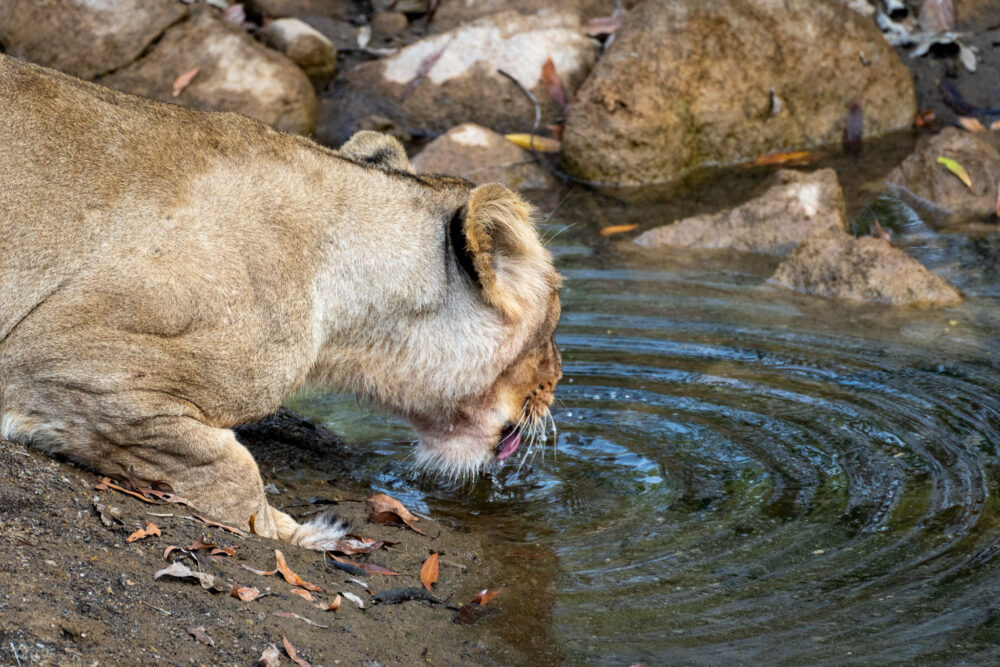
Quite the price to pay in both cash + effort to see the last Asiatic lions. But I promise it’s a once-in-a-lifetime experience and totally worth it as an animal lover.
Getting to Gir National Park (Ahmedabad to Gir National Park)
Getting around in Gujarat is a treat. Because while it looks like a square peninsular region that should be relatively easy to circle — it’s not that simple. You’ll have to go back and forth from Ahmedabad between most destinations. Which REALLY deeply disappointed us.
This is the easiest way to get to Sasan Gir.
Step 1: Train from Ahmedabad to Junagadh (7 hours)
Step 2: Head to Junagadh Bus Station and ask for a bus headed to Sasan Gir. They leave all throughout the day with the last bus leaving at around 5:30 or 6 PM. This bus takes 2 hours and is not a/c or assigned seating. You will pay on the bus and the fare should be 37 rupees per person.
Step 3: From Sasan Gir, you can either walk or get a rickshaw to your homestay if it’s out of the village center like us.
Your driver will call you the night before to arrange a pick-up for your safari if you stay in town. If you stay at the accommodation we recommend below, you’ll have to arrange your own rickshaw but the owner of the guesthouse is more than happy to help.
You could also travel from Somnath to Gir National Park in a similar way. Just look up train schedules and then head to the bus station. This is less common for foreigners.
While You're in the Area
Your Palitana Guide for an Impressive Jain Pilgrimage
Gujarat was one of the most interesting states we visited in India. This holy…
The Best Mumbai Street Food Tour: A Chef’s Tour
India has the most diverse and exceptional eats in the world. It’s my favorite…
How to Experience Holi in India like a local
Want to check the color explosion Hindu festival of Holi off your bucketlist? Here…
Where to Stay in Sasan Gir? (Gir National Park Hotels)
We loved the Wilds Villa Gir. But it was not in town. It did however have a pool, lovely rooms, super friendly hosts, and some of the best food we ate in Gujarat. Definitely eat dinner and breakfast (and more) here if you can. They will even arrange a bonfire for you at night if you want. Be sure to book in advance because it fills up.
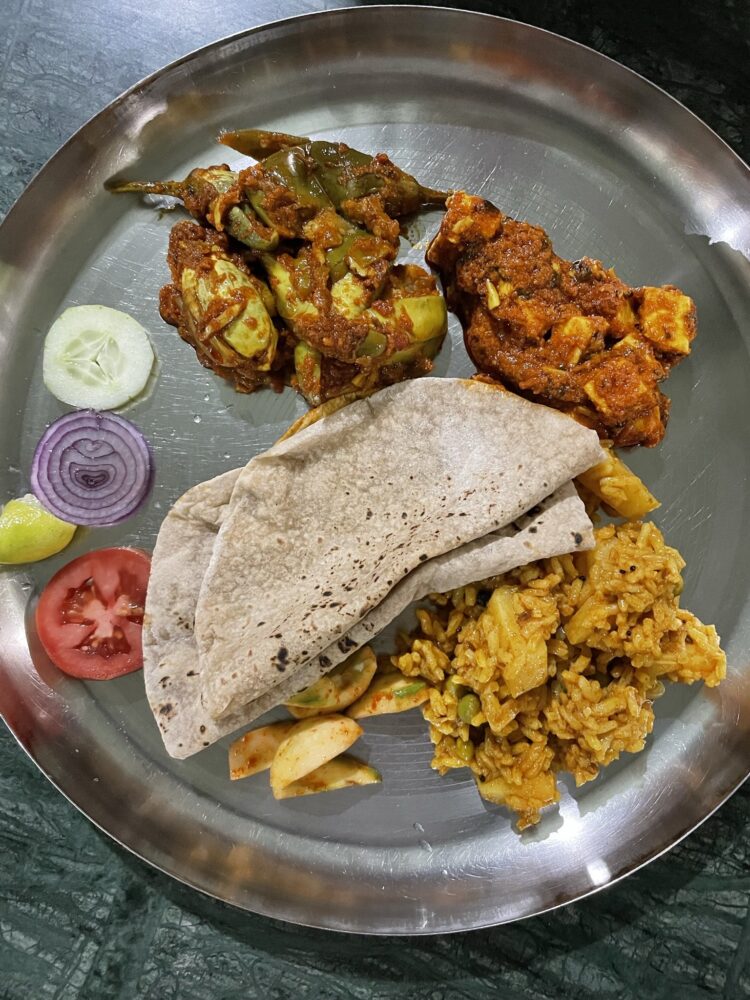
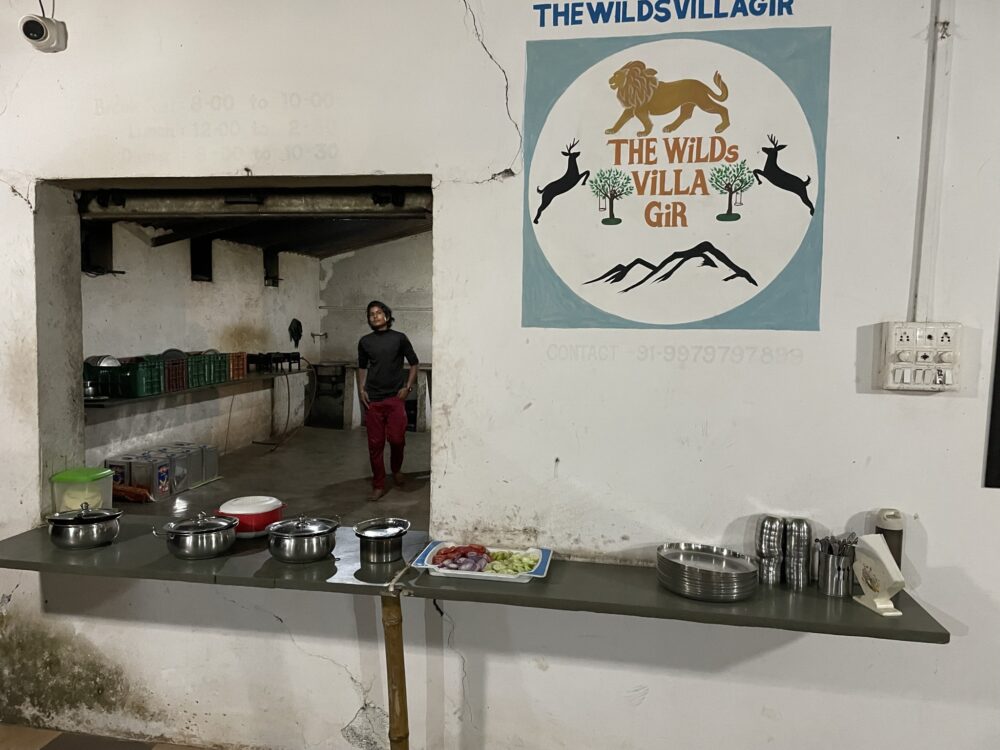
We paid 300 rupees ($4) each time we needed a ride to or from town to Wilds Gir. Which is probably a steep foreigner price but all the rickshaws seemed to have agreed that’s what we would pay. It was a 20-min bumpy off-road ride through Lion-lurking forests though.
I highly recommend getting the phone number of a rickshaw driver when you first arrive in Sasan Gir. This way you have one to call if/when you need a ride somewhere. It’s much harder to just hail one in very rural areas. Luckily our host at Wilds Villa was able to procure one for us each time.
Things to Bring With You on Your Gir Safari
- Water. None will be provided.
- Extra camera battery. Just in case.
- Hat. If you’re worried about the heat.
- Passport! You’ll need it for identification at the Gir National Park entrance.
- Cash. You’ll have paid everything up front except for the camera fee and a potential tip for your guide/driver. We tipped 500 rupees.
- Coat. For the early morning safari, the desert was cold! I had to wear my warmest jacket even though daytime temps hit 100 degrees Fahrenheit.
Try to wear khaki, green, or brown colored clothes. Avoid white, black, and anything neon.
Our Gir Safari Experience
Not to brag or anything, but I would say we were pretty successful.
Our animal luck is always quite good and today was no different. We spotted large gangly Hanuman monkeys, peacocks, lots of birds, a crocodile, a couple of varietals of deer, a deadly 5-ft long Russel’s Viper, and 14 lions in 4 different sightings.
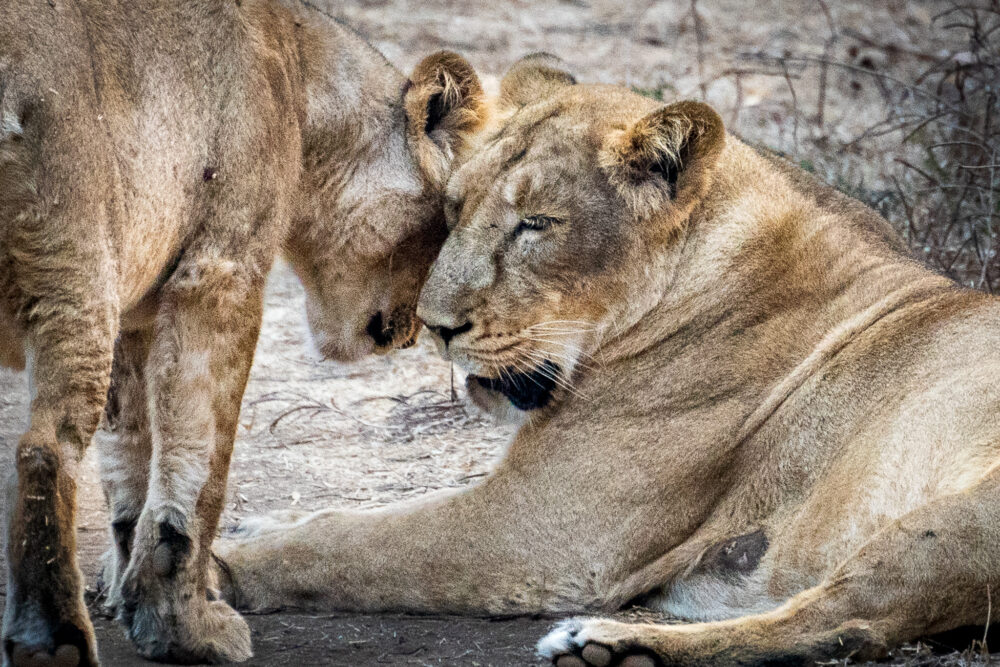
The safari jeep or gypsy is made up of two fully open bench seats which we had all to ourselves. Each jeep is a private safari. This means no barriers between you and the wildlife which was exhilarating and made for some great photos when we got within 6 ft of a big pregnant lioness.
I was pleased that none of the areas were crowded and twice we were the only vehicle with the lions.
My only complaint is that our safari ended at about 8:45 AM and started at 6:10 AM which means it’s a very expensive few hours. But for what we saw…absolutely worth it in my opinion.
Leaving Sasan Gir (Gir National Park to Ahmedabad)
Sasan Gir is a very unique destination in India and was our favorite place in Gujarat.
You’ll essentially have to take the same route back that you came in. I do not recommend staying overnight in Junagadh unless you absolutely have to. Stay another night in Sasan Gir instead to take an early morning bus before heading to the Junagadh junction to catch your train. (Don’t forget to book trains ahead of time).
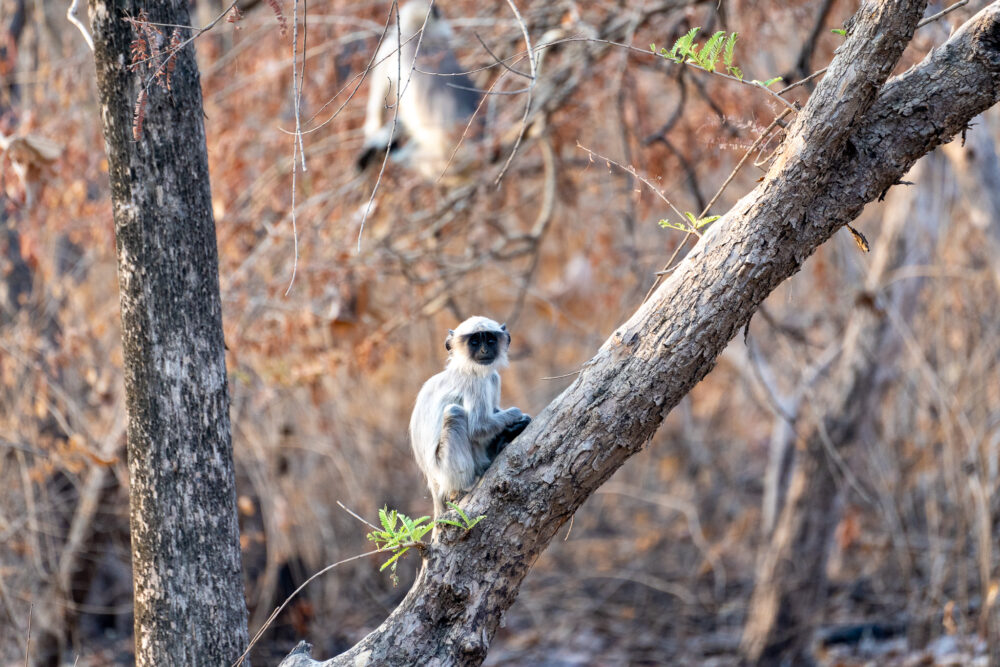
Accommodation in Junagadh is not good and overpriced. Food is meh. Just try to pass through if you can.
Spotting lions in Gir National Park is one of the “must-do” animal attractions in India. This country has lions, leopards, and tigers. My hope is to spot all of them. This is your one and only opportunity for the lions though. I hope this guide helps you to have a stress-free trip to the Gujarat peninsula. If you have any questions about Gir National Park you can always reach out to me on Instagram.
Save This Gir National Park Post for Later!
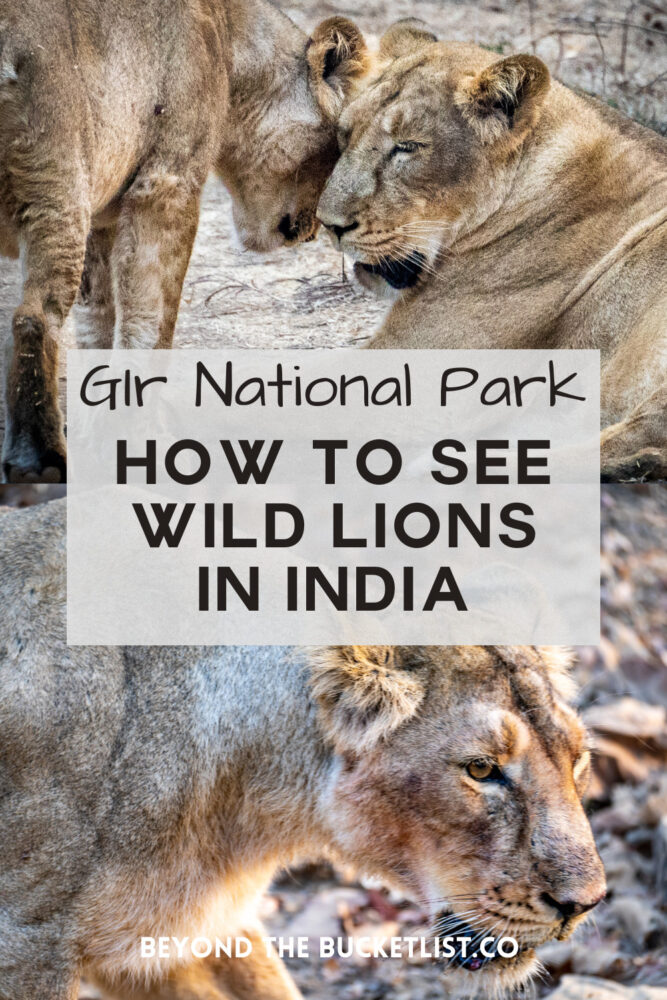
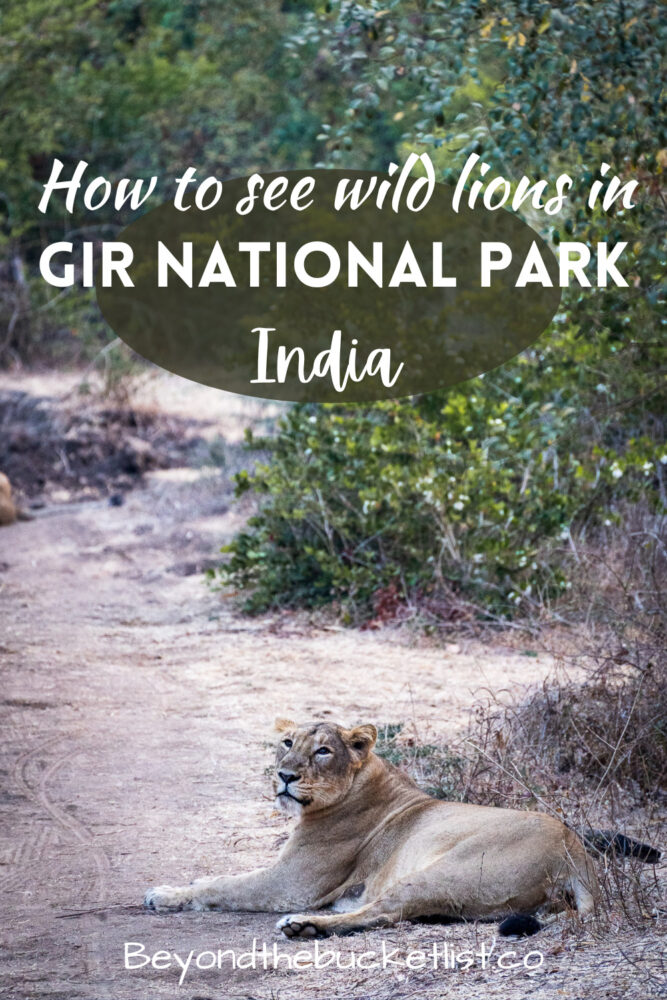

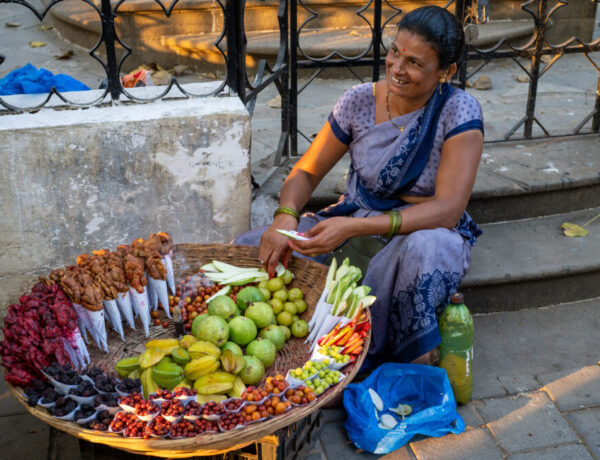

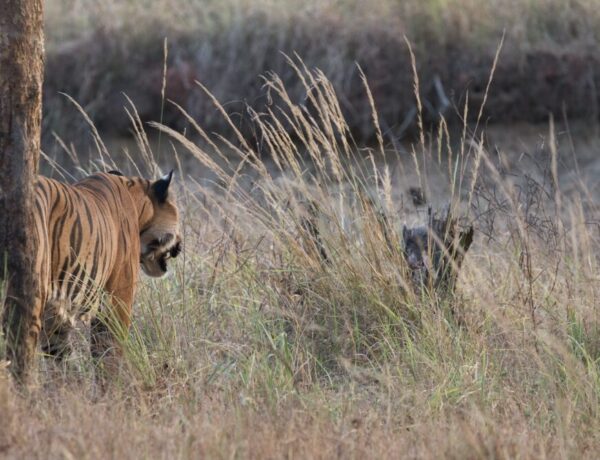
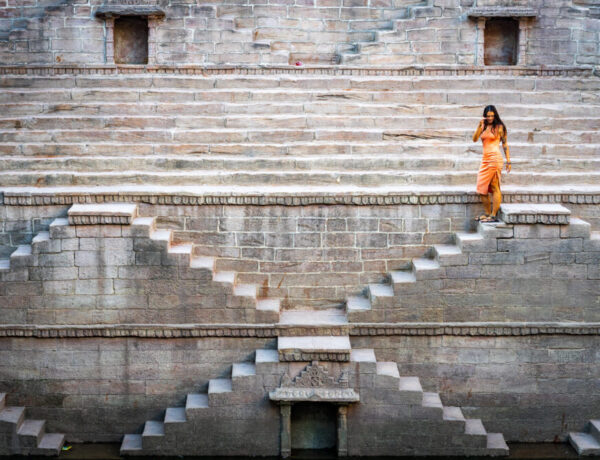


No Comments